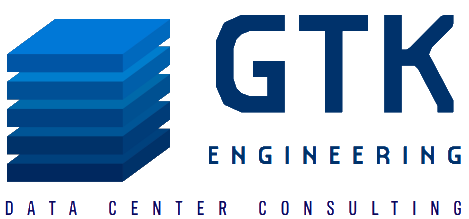FAQ
Frequently Asked Questions
-
A. A data center assessment consists of a comprehensive survey of the entire IT environment within the data center. Our team utilizes a checklist based on industry best practices to investigate the environment fully, identifying areas for improvement, possibilities for greater efficiencies, and any Single Points Of Failure (SPOF). We then compile a written assessment that highlights our findings and provide recommendations.
-
A. An assessment can equip you with the tools necessary to adapt to the evolving needs of a data center environment. It offers strategies to help ensure that High Performance Computing (HPC) requirements are met within the appropriate environment. Additionally, combining the assessment with a Computational Fluid Dynamics (CFD) model can provide a comprehensive understanding of the relationships between power, space, and cooling in the data center environment.
-
A. GTK Engineering team members hold current TS/SCI (Top Secret/Sensitive Compartmented Information) clearances.
-
A Computational Fluid Dynamics (CFD) model is a graphical representation of your data center environment, created through various inputs fed into the program. By incorporating dimensional data, information about IT load, obstructions above and below the floor, and air handler data, the model generates an airflow analysis. This analysis details temperatures, pressures, and velocities of airflow within the data center. This model becomes invaluable for evaluating the placement of racks to distribute the IT load on the data center floor, providing insights into how air flows through the racks. Additionally, the model can be updated with changes in the data center's IT environment, serving as a continually accurate baseline for airflow within the space.
-
A. A well-produced CFD model delivers critical insights into air utilization within the data center. It reveals the temperature and velocity under the floor and estimates the nominal load that would be supported based on the size of the perforated tiles. Additionally, the model can visualize a rack temperature map, aiding in the identification of areas where air might be infiltrating the cold aisle. This visualization provides clues on potential improvements, such as the addition of containment solutions to the data center environment. A well-produced CFD model stands as one of the invaluable tools for understanding and optimizing the power, space, and cooling dynamics within a data center.
-
A. We offer a customized training program tailored to meet customer requirements. Our trainers are highly qualified, holding major data center certifications from industry-recognized standards and best practices organizations. Our training program is based around the TIA-942 Telecommunications Infrastructure Standard for Data Centers, ANSI/BICSI 002 Data Center Design and Implementation Best Practices, among other leading standards. This comprehensive program equips your IT personnel with a deep understanding of the interrelations between power, space, and cooling. It also
-
A. Containment involves enclosing either the Hot Aisle or the Cold Aisle using a door assembly at each end and a roof system atop the racks to isolate the aisle. This setup helps ensure that all conditioned supply air is efficiently used by IT equipment in the cold aisle. Additionally, it allows the hot air from rack exhaust to be directly channeled to the air handler's return duct. This enables data centers utilizing Hot Aisle / Cold Aisle configuration with down flow air handlers to support greater IT loads within the racks.
-
A. Typically, it takes a couple of days onsite to perform the assessment checklist and gather the evaluation data; this would also depend on the size of the data center campus. We then take this data and produce an assessment report with the overall findings, areas of improvement, and steps to upgrade efficiencies within the data center.
-
A. Having over fifty years of experience working in the data center industry and holding multiple data center certifications allows GTK Engineering to apply this knowledge to your particular needs and provide expert consulting for your data center questions.
-
A. Although GTK Engineering does not offer data center certifications directly, we can suggest certifications and training that would be beneficial for your data center personnel. We can also tailor a training program to ensure that your personnel are following industry standards and best practices.
-
A. Typically, a Computational Fluid Dynamics (CFD) model can identify areas for improved efficiency within the data center. It can also be used to demonstrate improvements that could be realized through the addition of cold or hot aisle containment. Additionally, it provides a complete model of the airflow pressures and velocities within the data center environment.
-
A. GTK Engineering can tailor training programs based on your needs and ensure that they are in line with industry standards and best practices.
-
A. GTK Engineering can be retained on an as-needed basis to provide follow-up assessment services or consulting. We can also provide training for new personnel and any other additional data center services required.
-
A. GTK Engineering can provide a non-disclosure agreement (NDA) to ensure the security and confidentiality of any assessment data and results. All data produced during an assessment or CFD modeling becomes the property of the customer upon completion.
